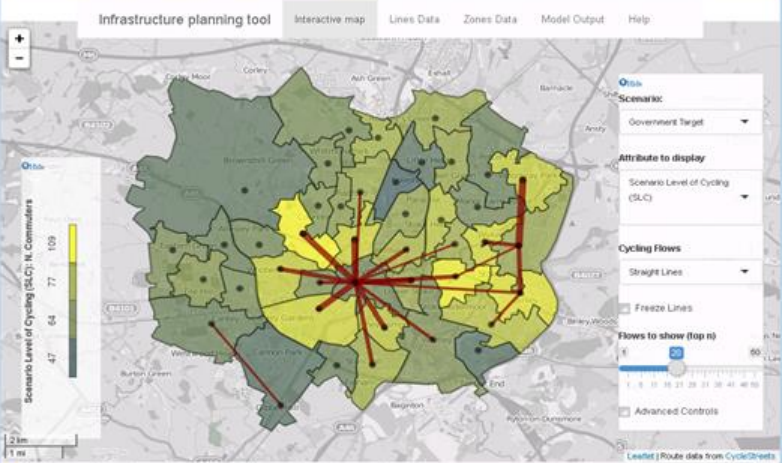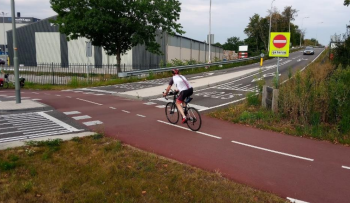
National Propensity to Cycle Tool (NPCT) Project
The National Propensity to Cycle Tool (NPCT) is a novel tool that aims to assist transport planners to prioritise investment in new cycle-friendly infrastructure. It does this by offering an online system for assisting the decision making process at local, city and regional levels.
Dr Robin Lovelace (University of Leeds) presented the 'National Propensity to Cycle Tool' supported by Roger Geffen, from ECF member CTC, to ECF representatives Kevin Mayne, Ceri Woolsgrove and Randy Rzewnicki on 24 July 2015. At the Centre for Diet and Activity Research (CEDAR), Lovelace, together with Dr. James Woodcock (CEDAR Principal Investigator) and partners developed this interactive web based tool for the British Department for Transport. It will be useful for local authority planners and campaigners planning to invest in cycling. The model will not only indicate where cycling might be expected to increase the most, but also what the health and carbon benefits of this would be.
What the tool does - The tool was built specifically for cycling. It shows the current cycling rate across zones in the city of Leeds. It indicates where the highest concentration of cyclists is located and provides an interactive visualization of flows. The tool allows ‘visioning’ for long-term future and illustrates a variety of possible scenarios when specific barriers are removed – for example if one takes e-bikes into account, removes socio-cultural barriers, or ignores the fact that women cycle less than men. As a result, the tool can help target specific areas and routes with high cycling potential, and thus facilitate strategic long-term planning.
How the tool was developed- Route-finding algorithms are applied to cycling routes to show the possible routes taken from home to the workplace. This route-finding is done by a third party website designed by cyclists, for cyclists – thus ensuring its reliability.
What makes the NPCT unique - According to Lovelace, their tool is unique because it can be used for strategic long-term planning to determine where new bicycle paths are most needed. Another novel feature of the method is its ability to quantify extra cycling potential along specific routes. Furthermore, the tool will be open-source rather than proprietary. A full summary about the NPCT including examples and graphs is available here, it was written by Robin Lovelace on behalf of the NPCT team. Additional information about the NPCT is available here. Author: E Heggarty
Regions:
Topics:
- Log in to post comments
Contact the author
Recent news!
Contact Us
Avenue des Arts, 7-8
Postal address: Rue de la Charité, 22
1210 Brussels, Belgium









